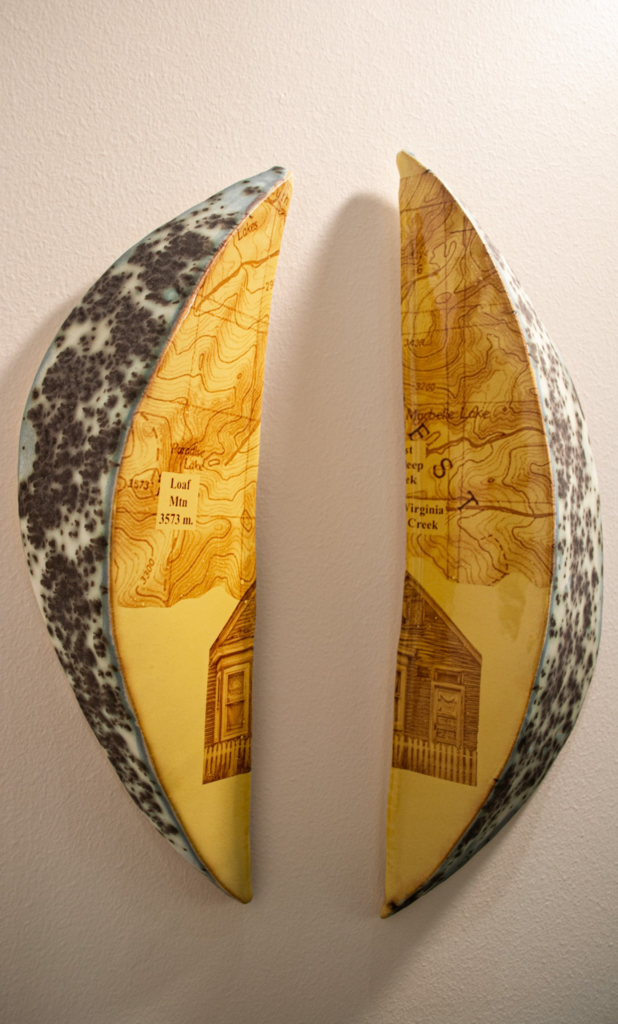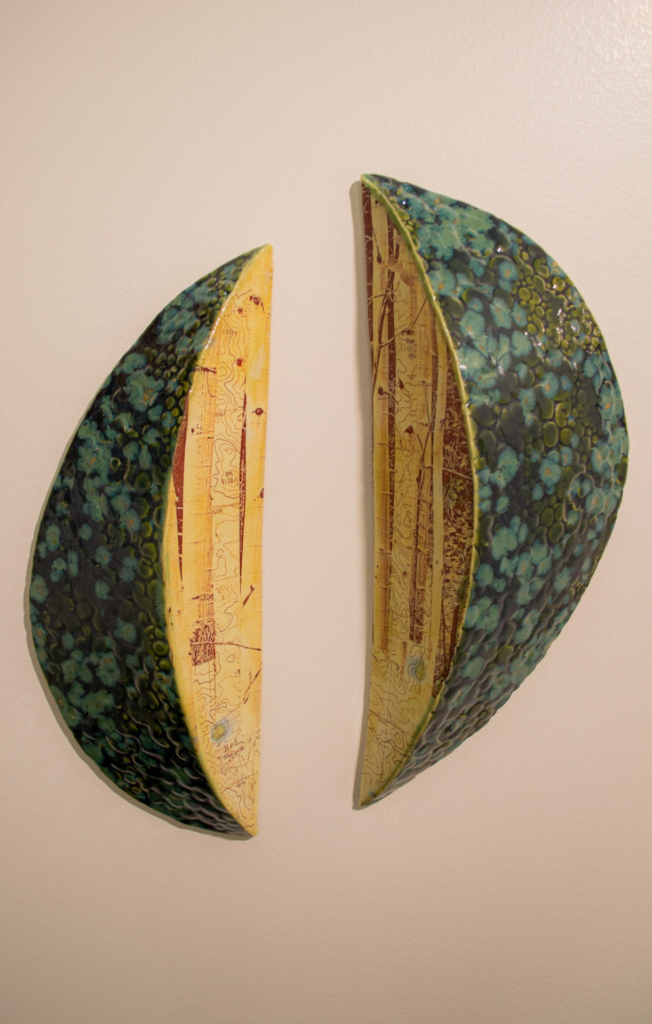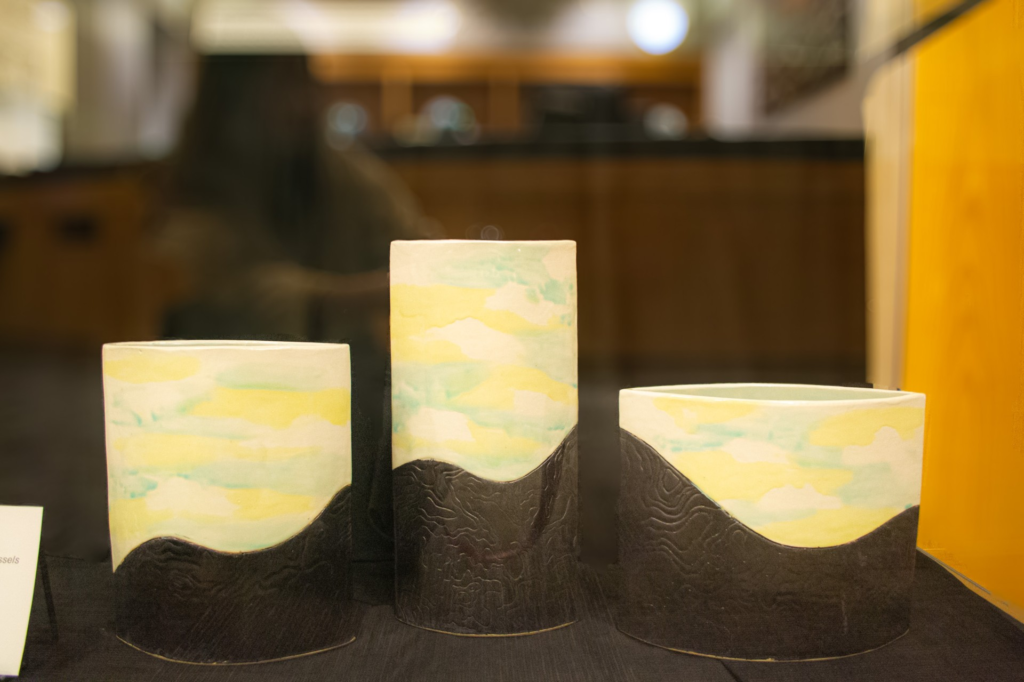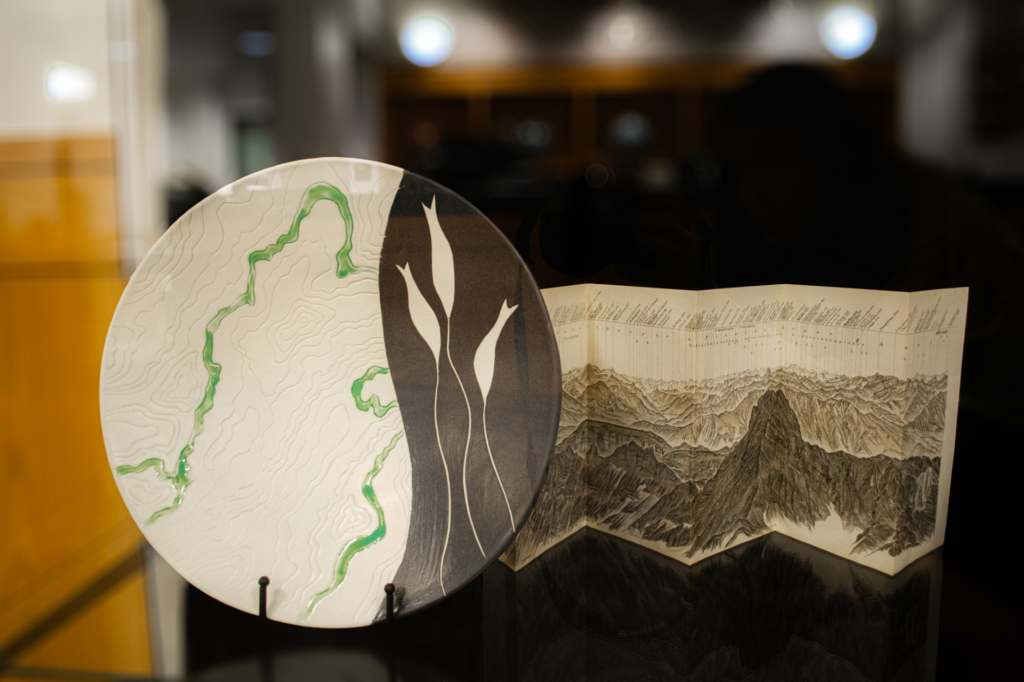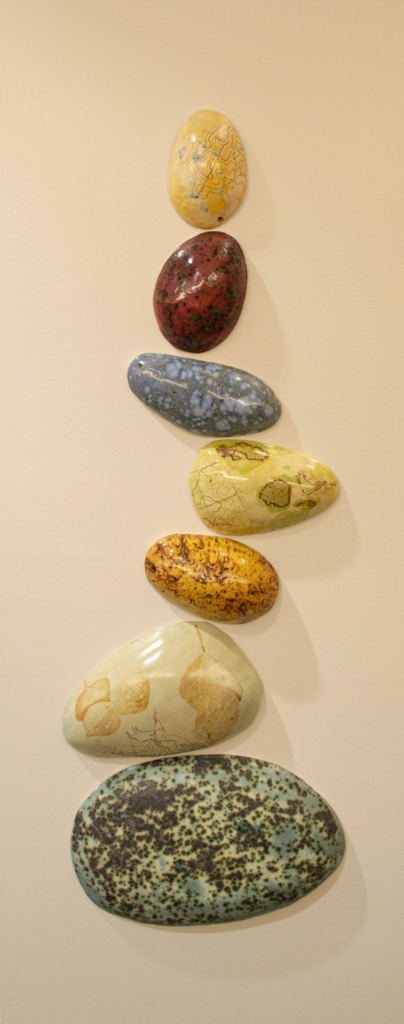By Ethel Yagudayeva
The latest pride and joy of CU Boulder’s Earth Sciences and Map Library is a unique exhibit featuring incomparable archived maps and beautifully crafted ceramics. “Topophilia” is a temporary installation planned to last until August 2025, presenting human’s innate “love for place” whether that be a place at home, or a place we’ve never experienced before.
“[Topophilia] is this kind of framework that people in human geography have used for a while to talk about human relationships that they build with the places they live in… and the experiences you have with the place and how it affects your thoughts and your emotions and sense of yourself,” said co-curator Samuel Cartwright, a PhD candidate in the department of Geological Sciences. He works hand-in-hand with Naomi Heiser after being inspired by the wide breadth of maps available in the library.
Heiser, the map curator of the library, was moved by the term “topophilia” and invited artists Johanna Mueller and Rita Vali to contribute their refined skills to portray such love for a place.

Photo by Ethel Yagudayeva
Johanna Mueller has been a printmaker for years, with some of her print patterns developed more than 10 years ago. Her contribution to this exhibit consisted of colorful hand-printed compositions, telling her story of “topophilia” through animal imagery. This imagery stems from classic fables, folklore and literature that shares the roots of portraying human culture through animals.
“Animals become these portals for our parables and our ways of being,” Mueller said after connecting her work with Aesop’s Fables and George Orwell’s “Animal Farm.” “My art exists to bring people halfway; there’s a general feeling of emotion that you might get while looking at the piece.”
Mueller’s favorite piece in the exhibit is her “Jackalope of Uncompahgre Peak,” a prime example of modern American folklore that provides creative freedom to both the artist and the enjoyer.

“Jackalope of Uncompahgre Peak” by Johanna Mueller.
Photo by Ethel Yagudayeva
Rita Vali specializes in functional pottery and has incorporated topography in her ceramics for 20 years. Her work in this exhibit is a creative portrayal of two dimensional topography of the world into three dimensions. Raised in Wyoming, most of her work in “Topophilia” reflects her personal love of her place there, namely a little log cabin in the woods which functions as the setting for memories with family and friends.
“I really went deep on ‘what is my topophilia really, and how would I illustrate that sense of place, feeling, experience, and nostalgia,’” Vali said. “I learned about myself, what makes up what I am today.”
Vali’s favorite installation is “Cloudscape,” a collection of 10 unique ceramic clouds featuring collages of topographic elements in her memory.


Two out of 10 ceramic pieces in the installation “Cloudscape” by Rita Vali.
Photo by Ethel Yagudayeva
“It’s really fascinating to see how artists are inspired by the same thing,” Mueller said. “So even though I’m working in two dimensions and Rita’s working in three dimensions with ceramic work, it’s really cool to see how we both are utilizing the map as a structure in our work, but doing it very differently.”
Topophilia goes beyond the love for something in proximity. Cartwright explores the love and curiosity for Mars in his research of seasonal frost, ice caps and the history of its surface development.
“Maps here on Earth show things like trees, bike paths or coffee shops and as humans, we know what that is and what that means,” Cartwright said. “In Astrotopophilia, how do we develop an understanding and a love for places in space that no human has ever been to, that don’t have trees and coffee shops?”
Cartwright emphasizes the importance and specialty of mapping on both Earth and in the cosmos, as it inspires science fiction and helps with space exploration.
“Our love of space and desire to explore space is really connected and really rooted in these maps that people have been making since the 1600’s on the first hand telescope to try to map and understand what’s going on on other surfaces of other bodies in the solar system.”
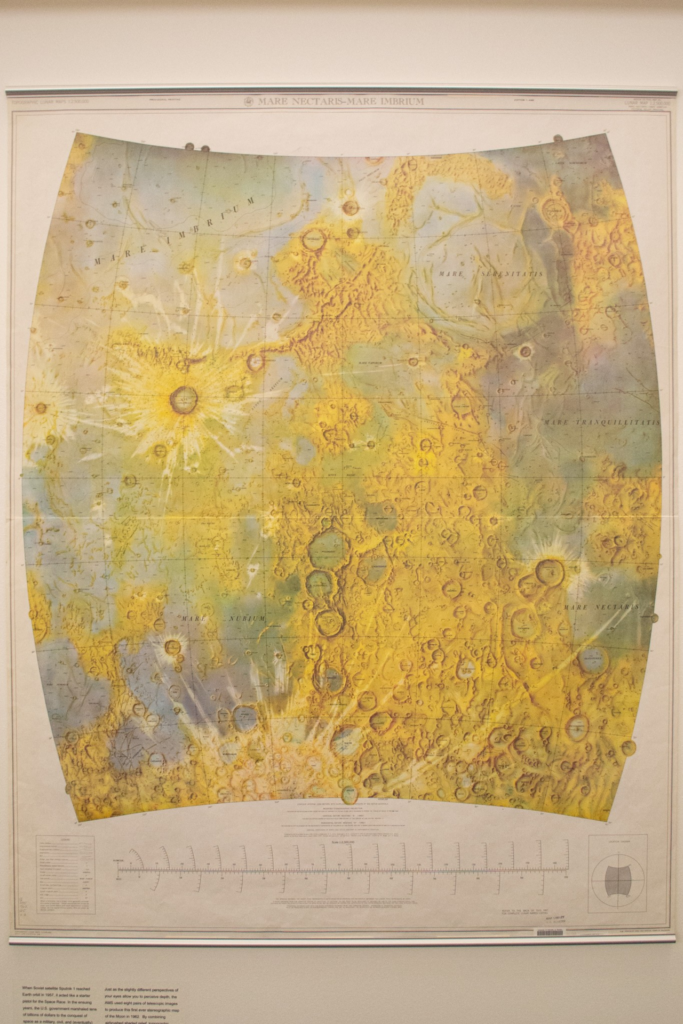
Map of features of the Moon housed in Map Library.
Photo by Ethel Yagudayeva
As much as knowing physics and astronomy are important in our curiosity for the cosmos, geology and mapping are just as valuable to our understanding of the universe. To appreciate that value more, The Earth Science and Map Library has all of their map collections available for public use and are accessible at any time, and all of the pieces will go on sale after the exhibit closes in August 2025.
Cartwright also works with Fiske Planetarium, which frequently hosts events to teach the public about the wonders of the cosmos with students and faculty who dedicate their research to distant worlds.
Lastly, if you’re planning a road trip across America, learning about the geography of a small town in a different country or want to see the surface of Mars or the Moon, the Earth Science and Map Library hosts an endless collection of maps and books that illustrate the world in the palm of your hand.
The artists websites are linked below:
Johanna Mueller: https://www.johannamuellerprints.com
Rita Vali: https://www.ritavali.com
More examples of work shown in the “Topophilia” exhibit are shown below. All photos by Ethel Yagudayeva
